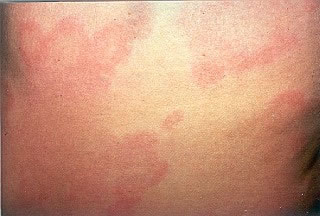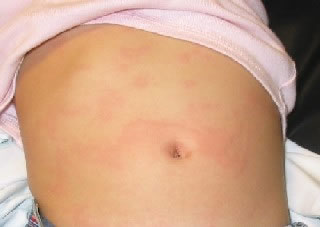Photos

Hives on the Back
- Hives is an itchy rash.
- The shapes of hives vary. Sizes of hives vary from ½ inch to several inches across.
- Hives may disappear in one area and then reappear somewhere else, over the course of several hours.
Source: Self Care Decisions, LLC
Used with Permission from Schmitt Pediatric Guidelines LLC.

Hives on the Abdomen
- Hives is an itchy rash.
- The shapes of hives vary. Sizes of hives vary from ½ inch to several inches across.
- Hives may disappear in one area and then reappear somewhere else, over the course of several hours.
Source: Self Care Decisions, LLC
Used with Permission from Schmitt Pediatric Guidelines LLC.